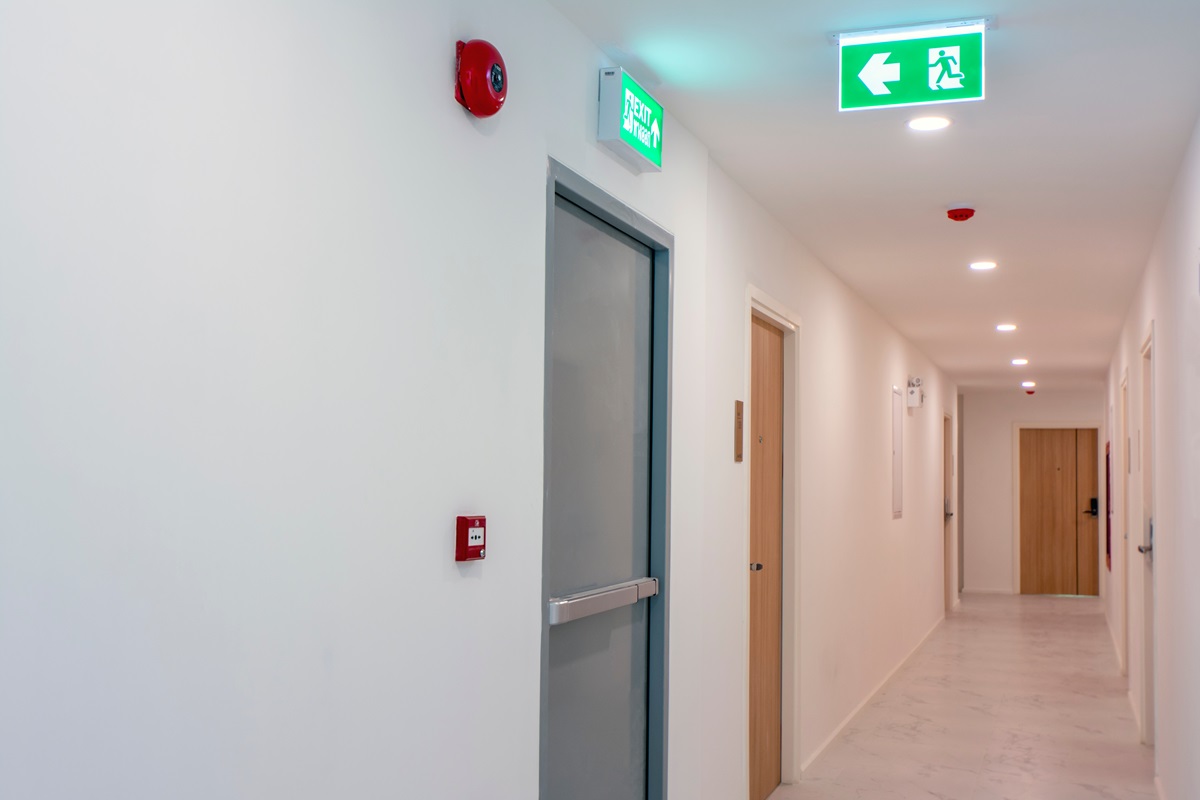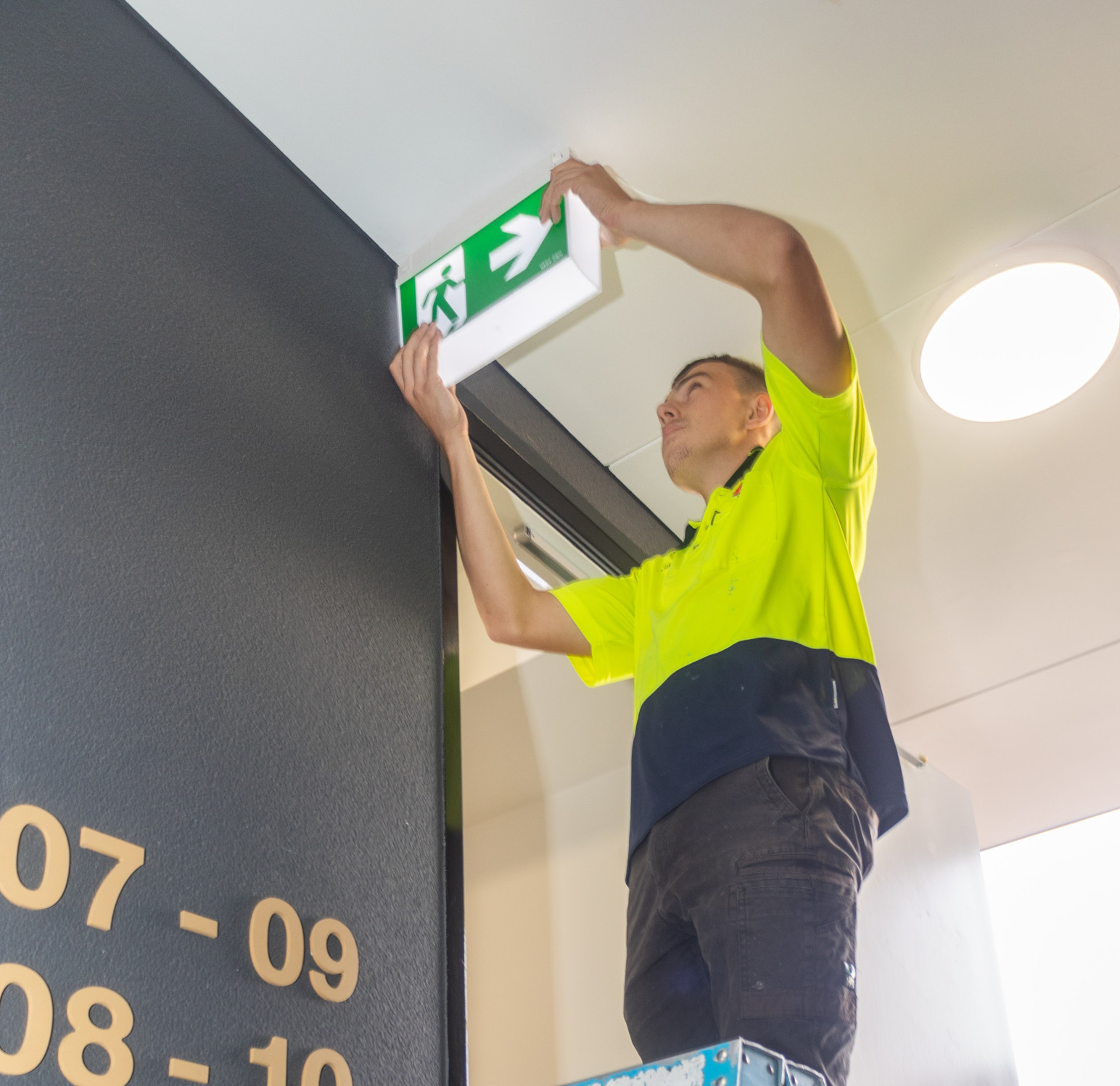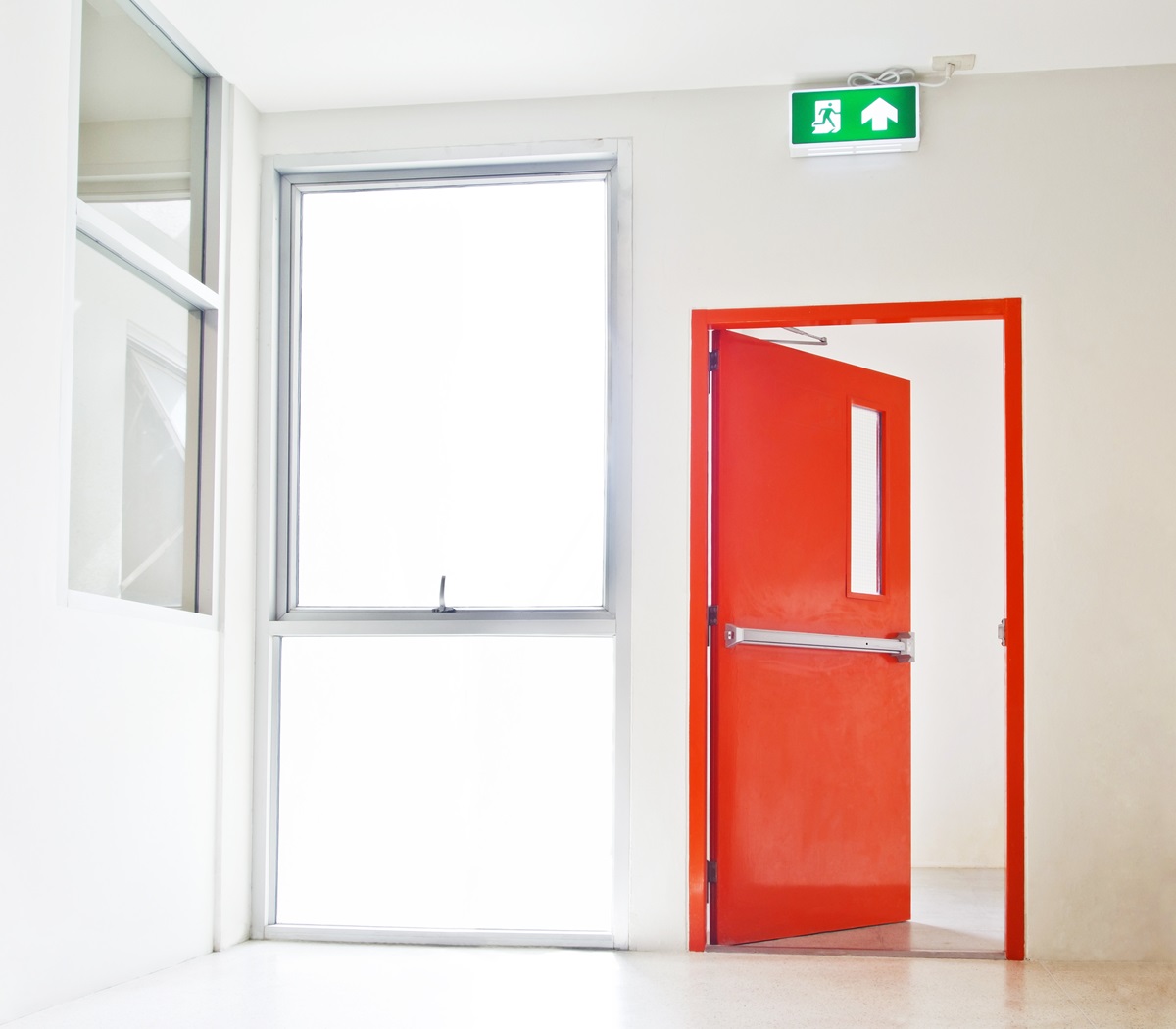Where Should Exit Signs Be Placed?
In the intricate world of building safety and emergency planning, one question stands paramount: ‘Where should exit signs be placed?’ The placement of exit signs within buildings in Australia is governed by a set of rigorous regulations and legal standards. These are designed to ensure that in the event of an emergency, occupants can quickly and safely find their way out. This blog aims to navigate the complexities that come with regulatory compliance and highlight the significance of exit sign visibility, and the proper placement of exit signs in a commercial setting.


The Importance of Exit Signs
Exit signs serve as visual aids during an emergency, guiding occupants towards the safest exit but also highlighting the way for first responders. Their importance cannot be overstated; in situations filled with panic and smoke, a visible guide can mean the difference between safety and danger. Despite their critical role, the question of ‘Where should exit signs be placed?’ is often surrounded by misunderstanding and a lack of knowledge.

Australian Legal Requirements and Standards
In Australia, the placement and visibility of exit signs are primarily guided by the Building Code of Australia (BCA) and Australian Standard AS 2293.1 which provide comprehensive guidelines on the emergency lighting installation, operation, and maintenance of exit signs.
These standards ensure that signs are properly illuminated, clearly visible, and precisely located to guide occupants safely out of buildings during emergencies. Ensuring your exit signs meet legal standards is crucial for the safety of the building’s occupants. It is important to approach this task with diligence and to engage a licensed professional for installation and maintenance. Properly maintained exit signs are a key component of a comprehensive safety strategy, reflecting a commitment to upholding high safety standards within your premises.

Maximum Effect With The Right Placements
To achieve the maximum effectiveness of exit signs, making sure to adhere to the most strategic placement guidelines is essential:
- Above or Adjacent to Doors: Exit signs must be installed either directly above or adjacent to every door that is an exit. This placement ensures that the exit is marked and visible from a distance within the building.
- Corridors and Passageways: Along corridors and passageways, exit signs should be placed at intervals ensuring they are always within sight of occupants moving towards an exit.
- Changes in Direction: Additional exit signs are required at points where the exit path changes direction, guiding occupants along the correct route to safety.
- Intersections and Decision Points: At intersections where occupants must choose a path, exit signs should indicate the direction to the nearest exit.
- Exit Routes: Along what is known as the path of egress, the route taken to exit a building, exit signs need to be placed at even intervals that ensure the exit direction is unmistakable.
- Stairwells and Changes in Level: In stairwells or where there are changes in floor level, exit signs should be placed to indicate the direction to continue towards the exit. This includes at the top and bottom of staircases and near ramps.

The Importance of Visibility and Accessibility
For exit signs to serve their purpose effectively, they must be visible and accessible at all times:
- Mounting Height: Exit signs should be mounted at a height that ensures visibility over any obstacles and can be easily seen by all occupants. In Australia, the mounting height is specified in the BCA and AS 2293.1, typically, this is between 2 metres and 2.7 metres above the floor level to ensure they can be easily seen over obstacles and crowds.
- Illumination and Contrast: Exit signs must be illuminated, either internally or externally, to stand out against their background, ensuring visibility in all conditions, including during power failures.
- Obstacle-Free Pathways: The area in front of and below exit signs must be kept clear of any obstructions that could impede visibility or access to the exit route
The effectiveness of exit signs is not set in stone; they require ongoing attention. Regular audits and maintenance checks are essential to ensure that your emergency lighting remains compliant with current standards and is functional in guiding occupants to safety.
This includes checking for obstructions, ensuring illumination works correctly, and updating signage in response to changes in building layout or regulations. To keep your exit signs up to legal standards and code, it’s best to get a team of professional commercial electricians engaged to ensure optimum performance at all times. They have the skills and expertise to make sure everything is up to code and fix anything that might be an issue.
Take a Proactive Approach to Safety with PWA Electrical Services
Figuring out the answer to ‘Where should exit signs be placed?’ is a vital aspect of building safety, particularly in ensuring swift and organised evacuations during emergencies. Adhering to Australian standards and regulations is not just about legal compliance; it’s about affirming a commitment to the safety and well-being of all building occupants. At PWA Electrical Services, our team of fully licensed electricians can create tailored solutions for all your commercial needs, including emergency lighting repairs, maintenance and installations. With our commitment to high quality and excellence, your building’s safety is in the right hands. Contact us today to chat with one of our team members and schedule a consultation.